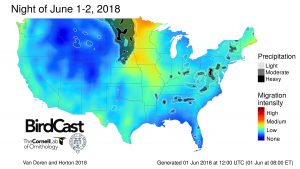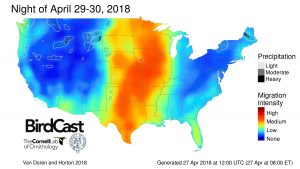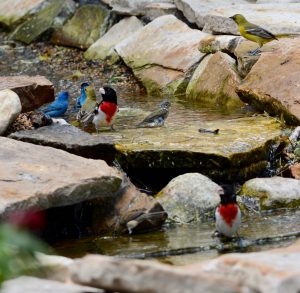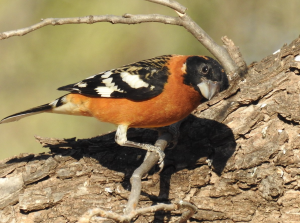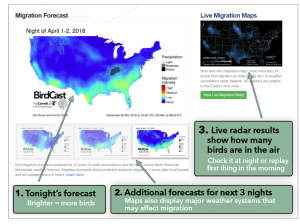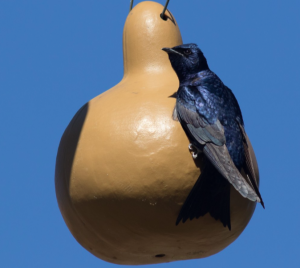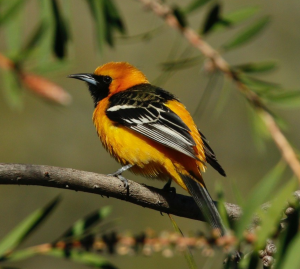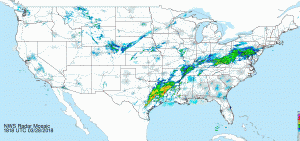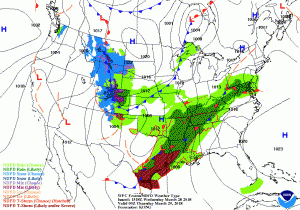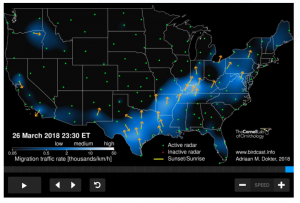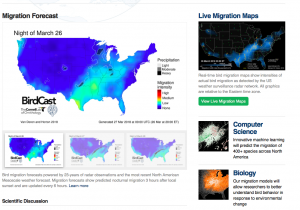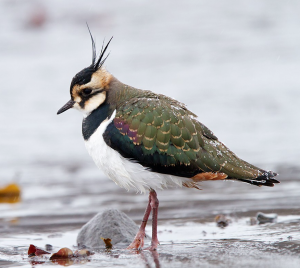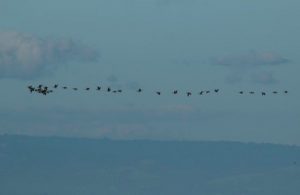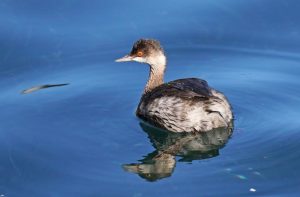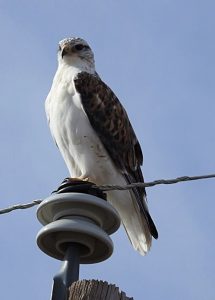News
Doppler weather radar data—like those shown in the animation above and often featured in weather broadcasts—can tell us much more than how much rain will fall on your weekend cookout. Here at BirdCast, we turn weather radar data into information on the numbers and flight directions of birds aloft in order to expand the understanding […] Read more...
FAQs: How does weather radar work? How do radar ornithologists remove ground clutter (nearby trees, buildings, and objects) from radar data? How do radar ornithologists remove weather systems from clouds of birds? Are there returns from aircraft on weather radar? Is all of the continental U.S. covered by radar? How is radar data converted into […] Read more...
Thanks for all the memories! BirdCast automated forecast and live migration maps for Spring 2018 will be deactivated until 1 August 2018 - the last forecast map was published for the night of 31 May 2018, and the last live migration map will post on 15 June 2018. Please check back often for additional comments and posts on the spring 2018 season and the arrival of the farm migration maps on 1 August! Read more...
BirdCast predicts medium to high migration traffic aloft over an extensive areas of the central US from Mexico to Canada this weekend. Let's take a look briefly at why we think this will happen, and what species will be on the move. Read more...
A strong cold front will move through the central US and bring precipitation and northerly winds to the Gulf of Mexico region. These factors are typically associated with coastal fallouts in many different habitats. Saturday and Sunday will be the primary fallout potential in the western Gulf region, whereas Sunday and Monday will be that potential in the east Gulf region. Read more...
In this short post we highlight tonight's migration forecast in the West. Conditions are favorable for movements from the Desert Southwest north and west along the Pacific Coast into Washington state. Read more...
Would you like more information on ways to use and to understand new BirdCast migration monitoring tools for spring 2018? Read on! Read more...
BirdCast tracks migration from many angles, including with interactive maps that can give us a bird’s-eye view of migration in progress. Check out arrivals of waves of Purple Martins. Read more...
With regular arrivals of spring migrants occurring daily, or nearly so, throughout the US, Team BirdCast returns with species on the move spotlights. This week, we highlight some on-time, early and late arrivals in the BirdCast West region. Read more...
Light, inbound trans-Gulf migration over Texas and Louisiana was visible in the Live Migration Map. Read more...
Team BirdCast highlights some relationships between migration and weather that could explain why our migration models predict migration in certain areas and not in others. Let's take a quick look at the migration forecast for the night of 28-29 March 2018. Read more...
For our inaugural automated migration forecast and live migration map analysis post, let's take a quick look to see how the maps compare! Read more...
BirdCast has been working toward automatically predicting and analyzing bird migration across the continental US, and we now unveil automated forecast maps and live migration maps. Welcome to the future of migration monitoring, please explore the new visuals and tune in frequently for discussion about movements! Read more...
Birders in northeastern North America should watch for Northern Lapwing, among other European vagrants, as low pressure over the North Atlantic couples with easterly flow associated with the negative phase of the North Atlantic Oscillation and cold, snowy conditions in western Europe. Read more...
With an unusual period of cold and snowy weather in western Europe, trans Atlantic movements of species like Northern Lapwing are possible. In keeping with previous discussions we have posted about this topic, BirdCast briefly discusses the potential for European vagrants to arrive in North America. Read more...
Local light to moderate flights were scattered across the West and feature numerous waterfowl in this late season period, while the pulses of moderate flights in the Great Plains and Southeast featured many species of waterfowl, Turkey Vulture, Bonaparte's Gull, Eastern Bluebird, Golden-crowned Kinglet, Cedar Waxwing, and Dark-eyed Junco. Please join us throughout the winter for updates and alerts in advance of the first regular spring season forecasts and analyses in March 2018. Read more...
Continental Summary Local light to moderate flights were scattered across the West and feature numerous waterfowl in this late season period, while the pulses of moderate flights in the Great Plains and Southeast featured many species of waterfowl, Turkey Vulture, Bonaparte’s Gull, Eastern Bluebird, Golden-crowned Kinglet, Cedar Waxwing, and Dark-eyed Junco. Need a review of […] Read more...
Primarily unfavorable migration conditions in the West, coupled with the late date in the fall migration season, will allow for only local light movements featuring Northern Pintail, Green-winged Teal, Redhead, Pied-billed Grebe, Eared Grebe, Sandhill Crane, Say's Phoebe, Varied Thrush, and American Pipit, while several pulses of energy moving through the East will bring favorable migration conditions that feature moderate to locally heavy movements of Gadwall, Lesser Scaup, Bufflehead, Tundra Swan, Common Loon, American Bittern, Bonaparte's Gull, American Kestrel, and Hermit Thrush. Read more...
Continental Summary Primarily unfavorable migration conditions in the West, coupled with the late date in the fall migration season, will allow for only local light movements featuring Northern Pintail, Green-winged Teal, Redhead, Pied-billed Grebe, Eared Grebe, Sandhill Crane, Say’s Phoebe, Varied Thrush, and American Pipit, while several pulses of energy moving through the East will […] Read more...
Local light and moderate flights were the norm in the West featuring Common and Barrow's Goldeneyes, Trumpeter Swan, Bonaparte's Gull, Snowy Owl, American Kestrel, and Horned Lark, while moderate and heavy flights occurred in numerous areas of the East featuring Canvasback, Common Goldeneye, Hooded, Red-breasted and Common Mergansers, Tundra Swan, Bonaparte's Gull, Snow Bunting, and American Tree Sparrow. Read more...

